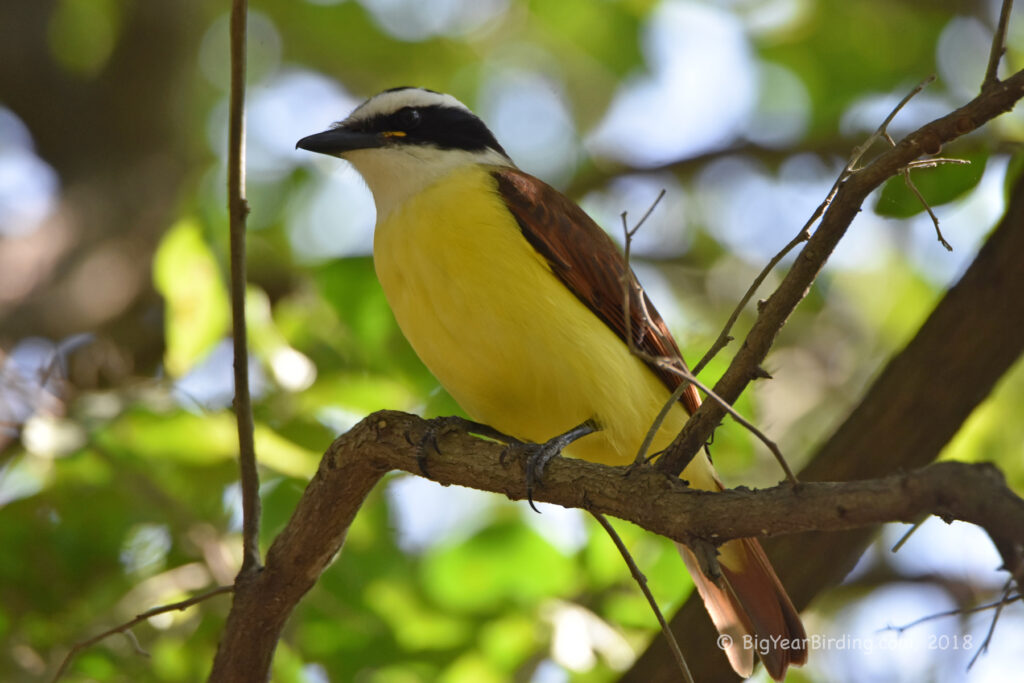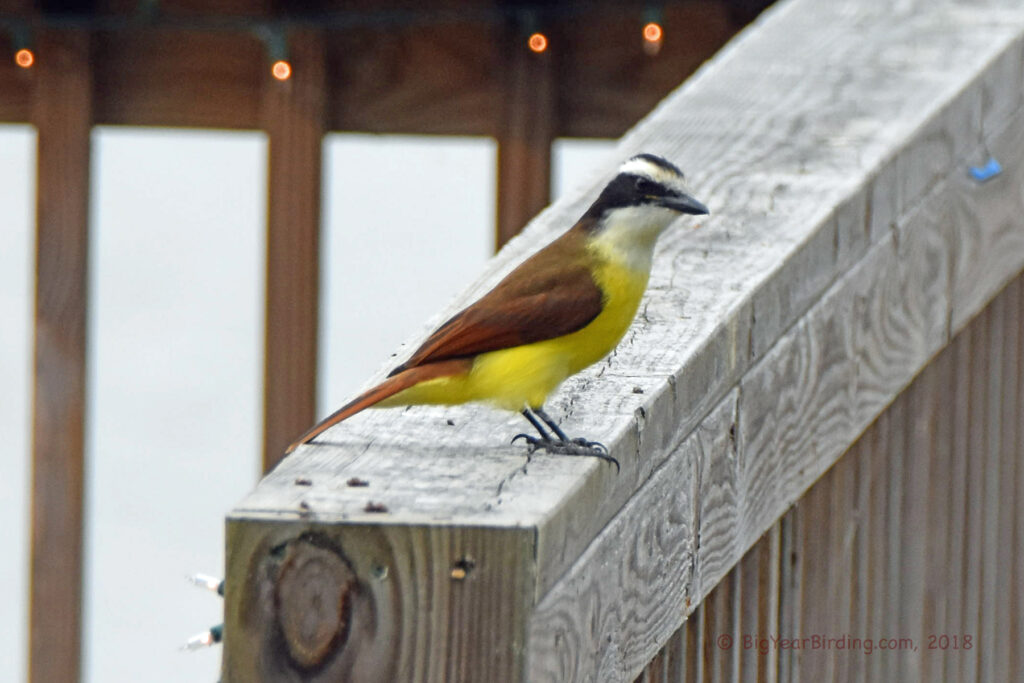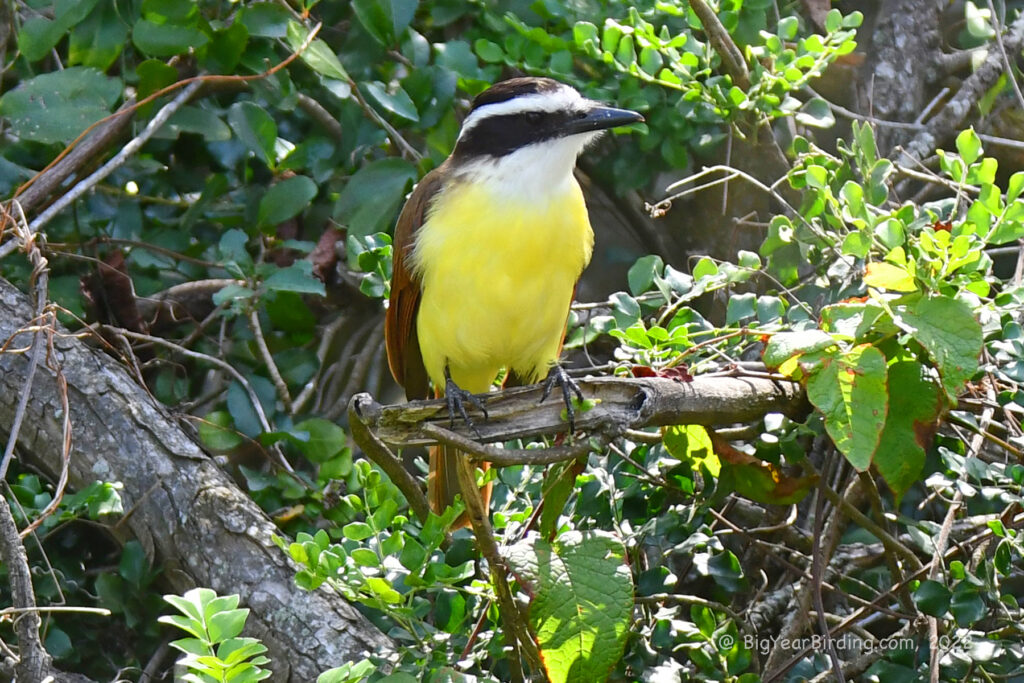
The Great Kiskadee (Pitangus sulphuratus) is a striking bird species that belongs to the tyrant flycatcher family. This bird is endemic to the Americas, ranging from the southern United States to northern Argentina. The Great Kiskadee is a medium-sized bird, measuring approximately 8.5 to 10 inches in length and weighing between 2.5 to 3 ounces.

The most striking characteristic of the Great Kiskadee is its bright yellow belly and head, contrasting with its black head and back. The wings and tail are brown, and the tail feathers have white tips. The bill is thick and black, while the eyes are dark brown. These distinctive field marks make it easy to identify the Great Kiskadee in the field.
Great Kiskadees are non-migratory birds, meaning that they do not migrate long distances to breed or overwinter. However, they may move short distances in response to changing food availability or weather conditions. In their range, they are common residents of open woodlands, scrublands, and forest edges, where they feed on insects, small reptiles, and fruits.
During the breeding season, Great Kiskadees form monogamous pairs and build their nests in trees, shrubs, or man-made structures such as bridges or buildings. The female lays 2 to 5 eggs, which both parents incubate for around 2 weeks. Once the chicks hatch, both parents participate in feeding and caring for the young.

The Great Kiskadee is an adaptable and widespread species that is not considered globally threatened. However, habitat loss and fragmentation due to human activities such as deforestation and urbanization can have negative impacts on their populations. Conservation efforts, such as protecting and restoring their habitats, are crucial to ensuring the continued survival of this charismatic bird species.

